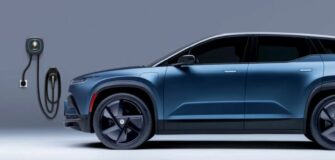Meet the Longbow Speedster, the Purest EV Yet

Longbow Speedster
Image Credit: Longbow Motors
In the race to electrify performance, one thing has been quietly slipping away: lightness. As modern electric vehicles grow heavier with each added kilowatt-hour of battery capacity, the joy of agility has often been sacrificed for range. That’s what makes the new Longbow Speedster such a fascinating development. Built by a group of engineers who have worked with Tesla and Lucid, this 1,973-pound electric sports car aims to prove that true driving excitement doesn’t have to come with the weight of a small SUV.
The founders behind Longbow have taken inspiration from Lotus’ classic philosophy simplify, then add lightness. They’ve paired that principle with modern EV technology to create a car that feels raw, responsive, and refreshingly different from the over-engineered EVs dominating the market.
Designed for Purity, Engineered for Precision
Every decision behind the Longbow Speedster has been made to keep things simple yet effective. The result is a minimalist, driver-centered machine that embodies what many feel electric sports cars have lost connection. Weighing almost 40% less than a Lotus Emira V6 and about 16% lighter than the Mazda MX-5 Miata RF, the Speedster brings sports-car proportions back to the EV world.
Its rear-mounted electric motor delivers around 270 horsepower, driving only the rear wheels, a configuration that promises sharp handling and immediate throttle response. The Speedster is expected to sprint from 0 to 60 mph in about 3.5 seconds, a figure that challenges cars far more powerful and expensive.
Compared to the heavier Chinese-made MG Cyberster, which requires dual motors and nearly twice the horsepower to achieve similar performance, the Longbow’s engineering restraint pays off. Instead of chasing extreme outputs, it focuses on delivering balance, efficiency, and driving feel three traits often overlooked in the current EV market trends.
The Battery
Underneath the Speedster’s sculpted aluminum body sits a battery estimated at 55 kWh, offering a WLTP-rated range of roughly 275 miles. The key here isn’t capacity; it’s efficiency. The slim, low-mounted pack keeps the center of gravity tight to the road, preventing that “riding-on-top” sensation found in many high-floor electric cars.
This approach reflects a broader movement in EV battery tech, where smarter packaging and lightweight materials are becoming as important as raw energy density. With regulatory shifts and government EV incentives pushing automakers toward sustainability, the Speedster’s efficient design could hint at how future sustainable EVs will evolve.

The Featherweight Electric Vehicle
Image Credit: Longbow Motors
Style That Honors the Past Without Copying It
Visually, the Longbow Speedster strikes a balance between classic and modern. It borrows proportions familiar to any sports car enthusiast—long hood, low stance, short rear overhang yet nothing about it feels retro. The design is sleek but not futuristic in the sterile way many concept EVs tend to be.
The clean surfaces and two-tone finishes give the Speedster an identity that’s confident but not excessive. It’s not trying to look like a spaceship; it’s simply a car you’d want to drive, something even established luxury EV brands sometimes forget.
Inside, the cabin remains under wraps for now, but Longbow has confirmed that simplicity will continue there too: light materials, intuitive controls, and minimal digital distraction. Sustainable EV materials will likely feature throughout, aligning with the company’s focus on low weight and clean production.
Smart Sourcing, Smarter Strategy
While many automakers chase vertical integration, building every component in-house, Longbow is going in the opposite direction. Nearly all of the Speedster’s hardware from the e-motor to lighting systems comes from specialized suppliers. The car’s extruded aluminum chassis is based on a modular EV platform developed in the U.K., known for its agility and strength.
Here’s why that matters:
- It reduces R&D costs, making small-scale production feasible.
- It allows Longbow to use proven, reliable technology without years of internal development.
- It supports affordable EVs in the long term, benefiting from economies of scale.
This modular, supplier-driven model could influence the next wave of compact electric cars and boutique manufacturers looking to enter the EV charging networks ecosystem without massive investments.
Built in Britain, Inspired by Racing
All major components for the Speedster except the battery cells will be made in the U.K. That decision isn’t just about geography; it’s about heritage. Britain remains home to some of the most advanced motorsport engineering talent in the world, with teams that supply Formula 1, endurance racing, and high-performance EV projects alike.
Production will be limited to just 150 units, priced at around $110,000 each. Though the car won’t initially be sold in the U.S., a follow-up Longbow Roadster version with a windshield and roof is already planned for 2027, expected to start around $85,000. That’s still far below the projected electric car prices of upcoming super-EVs like Tesla’s long-promised Roadster.
A Challenge to the Status Quo
The Longbow Speedster represents something Tesla and many others haven’t mastered yet, emotional engineering. It doesn’t chase absurd acceleration figures or autonomous driving claims. Instead, it delivers an experience that feels alive, immediate, and refreshingly analog in a digital world.
As the EV market trends toward bigger batteries and heavier cars, Longbow’s featherweight Speedster reminds you why weight still matters; for handling, for joy, and for the soul of driving.
Conclusion
In a market dominated by tech headlines and battery specs, the Longbow Speedster stands out by returning to what made sports cars special in the first place: lightness, precision, and emotion. It’s not the most powerful or longest-range EV you’ll read about, but it might just be the most inspiring.
If you’ve been waiting for proof that electric performance can still feel pure, this might be the moment you’ve been waiting for. The Longbow Speedster doesn’t just move fast, it moves the conversation forward for electric vehicles in 2025 and beyond.









